Configure | Packaging Configuration
Determine your organization's network packaging preferences in the Shipium Console.
About packaging configuration
The Packaging Configuration section in the Shipium Console is the foundational area where you define all the standard boxes, envelopes, and other containers your operation uses for shipping.
This is a required setup for all customers.This list of packages serves as the basis for all packaging-related operations, including rate shopping and label generation.
You can access the packaging configuration from the lefthand navigation menu.
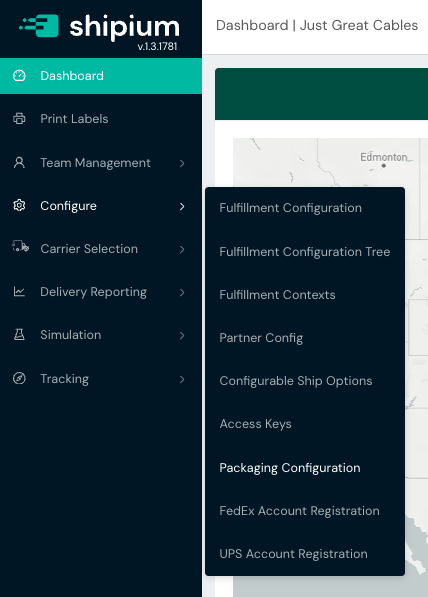
The configuration is divided into two main areas: (1) packaging and (2) packaging sets.
Packaging
For individual packaging, you'll select the Packaging tab.
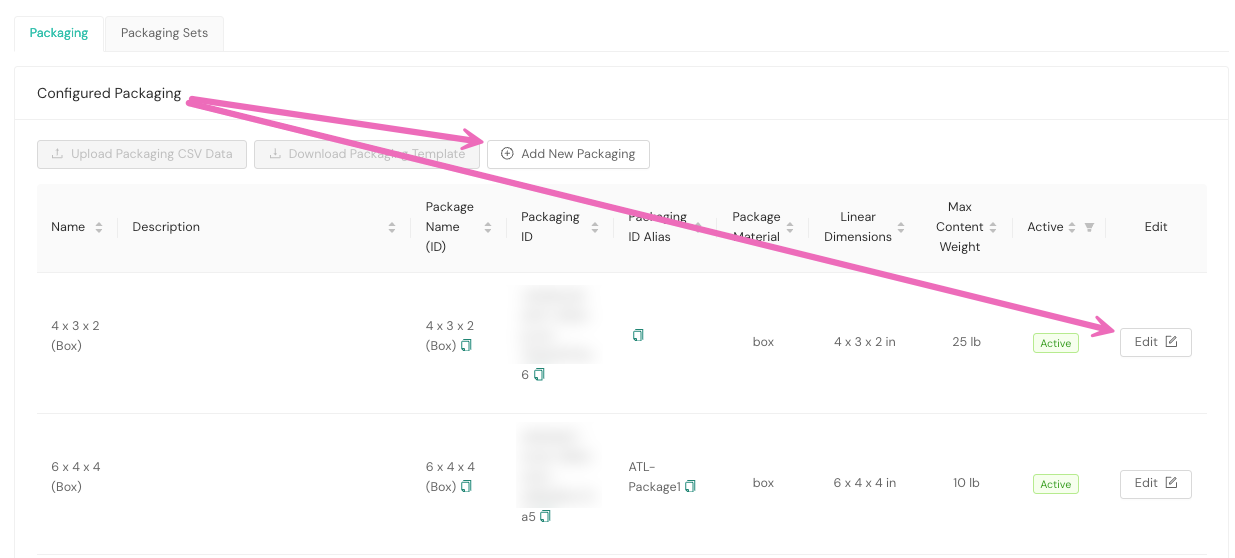
You can edit existing packaging configurations, or you can add a new packaging configuration by selecting the Add New Packaging button. You'll build your library of available package types. For each container, you must define its specific attributes.
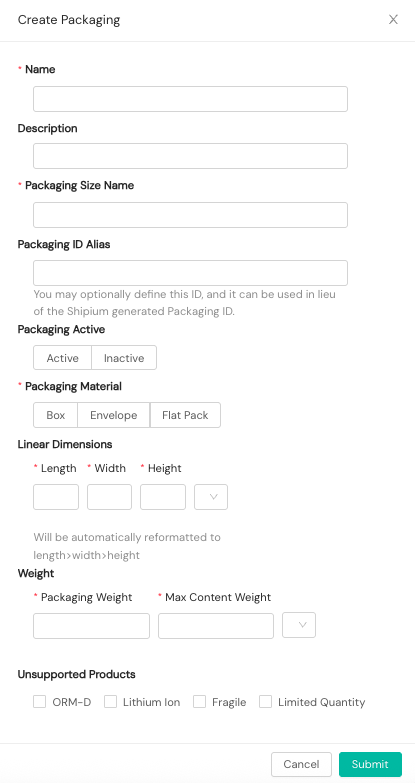
- Name. Required. A human readable name for the packaging configuration
- Description. Optional. An optional packaging configuration description
- Packaging Size Name. Required. A custom name for the packaging that you can reference in calls to Shipium's APIs
- Packaging ID Alias. Optional. An optional human readable identifier for the packaging configuration that you can reference in calls to Shipium's APIs
- Packaging Active. Optional. Determines if your packaging configuration is active or inactive; the default value is active.
- Packaging Material. Required. You'll select your packaging material from box, envelope, or flat pack.
- Linear Dimensions. Required. You must provide the length, width, height, and unit of linear measurement for the packaging configuration.
- Weight. Required. You must provide the packaging weight and maximum content weight as well as the unit of weight measurement for the packaging configuration.
- Unsupported Products. Optional. You can establish any unsupported products (ORM-D, Lithium-Ion, Fragile, or Limited Quantity) for the packaging configuration.
Packaging sets
For packaging sets, you'll select the Packaging Sets tab. This feature allows you to group your individual packaging types into logical sets. This is most often used to manage packaging inventory by location.
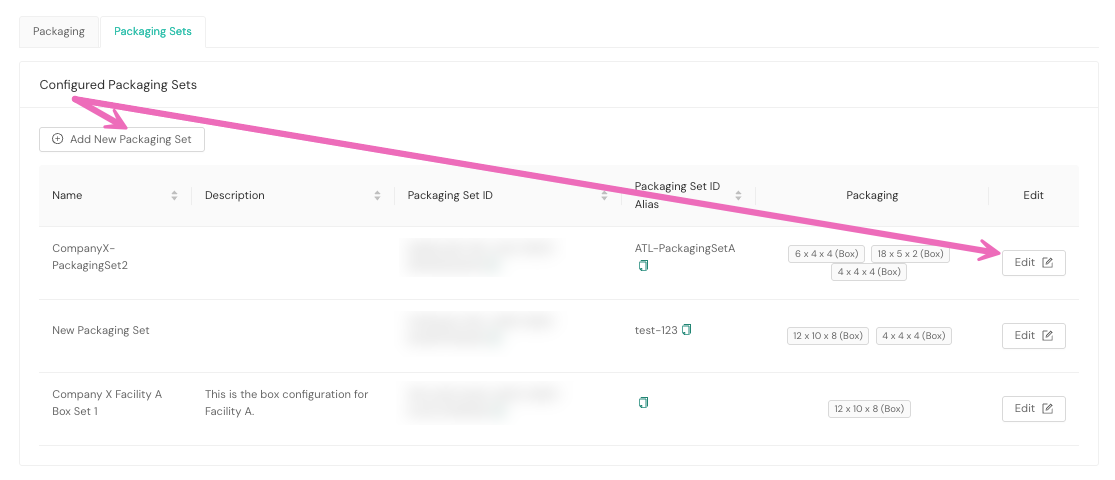
You can edit existing packaging configurations, or you can add a new packaging configuration by selecting the Add New Packaging button. For each new packaging set, you'll need to provide its identifying information and options.
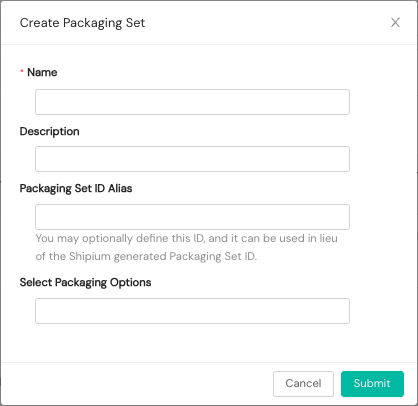
- Name. Required. A human readable name for the packaging set
- Description. Optional. An optional packaging set description
- Packaging Set ID Alias. Optional. An optional human readable identifier for the packaging set that you can reference in calls to Shipium's APIs
- Select Packaging Options. You'll choose the desired packaging options from a dropdown menu.
How packaging configuration relates to the Packaging Planner
It is important to distinguish between your packaging configuration and the Packaging Planner:
- Packaging Configuration (Required). This is the master list of all your available packages and their dimensions, as described above.
- Packaging Planner (Advanced Tool). This is a separate, advanced optimization tool that uses your defined packaging list to determine the most efficient and cost-effective way to pack a multi-item order.
Resources
Your Shipium team member is available to help along the way. However, you might find these resources helpful:
Updated about 2 months ago
